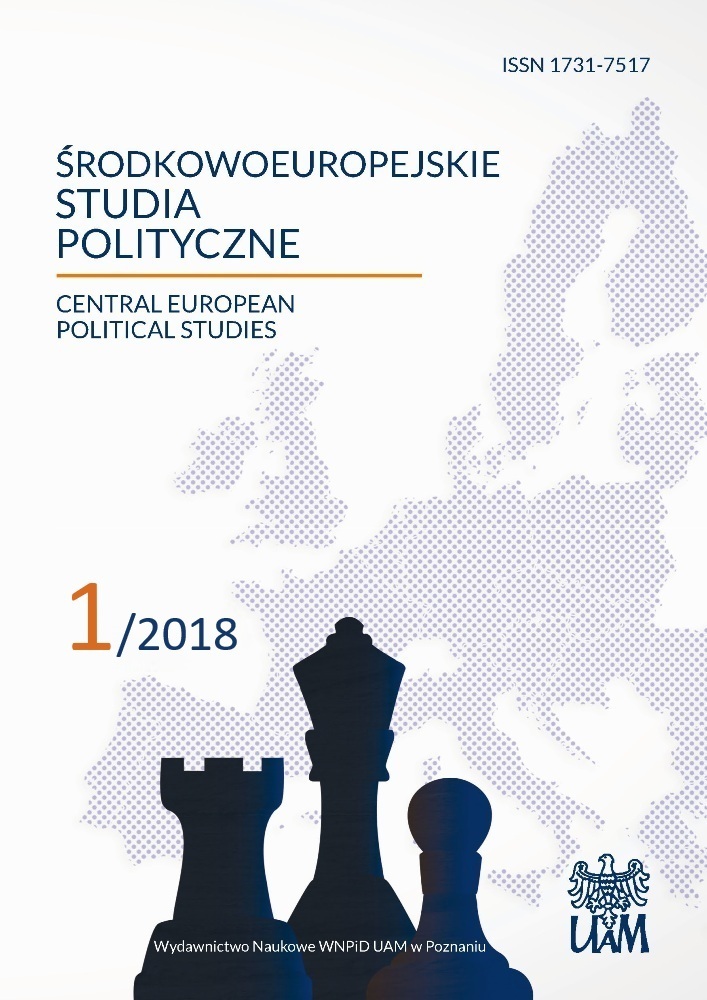Abstract
The purpose of this study was to compare the distributions of large urban centers in twelve countries: Belarus, Bulgaria, Czechia, Estonia, Hungary, Latvia, Lithuania, Moldavia, Poland, Romania, Slovakia, and Ukraine. In order to analyze the research problem identified, two study methods were applied: Zipf’s rank-frequency rule and an analysis of the degree of concentration using the Lorentz curve. Firstly, the pape presents the issues related to the demographic development of the capital cities in the selected countries considered at five moments in time (1900, 1930, 1960, 2000, and around 2015). Then, based on the methodology adopted, a quantified assessment of the role of the biggest city was carried out and presented, along with the relations in magnitude existing between this city and the remaining settlement units analyzed.Countries were divided into those characterized by monocentric and polycentric patterns. The ultimate results of the statistical analysis demonstrated the usefulness of the methodology applied in the study of the distribution and magnitudes of various kindsof settlement units on an arbitrarily defined territory.References
Statystyczne materiały źródłowe:
National Statistical Committee of the Republic of Belarus (2015), Minsk city.
National Institute of Statistics Romanian Statistical Yearbook 1990–2012 (2014), Bucharest.
National Institute of Statistics Romania in Figures (2014), Bucharest.
Regional Statistical Yearbook of Slovakia 2014 (2014), Statistical Office of the Slovak Republic, Bratislava.
Republic of Bulgaria, National Statistical Institute 2014 (2015), Sofia.
Rocznik Statystyczny Rzeczypospolitej Polskiej (2015), Główny Urząd Statystyczny, Warszawa.
Statistical Yearbook of the Czech Republic 2014 (2014), Czech Statistical Office, Praha.
Statistical Yearbook of Lithuania 2013 (2013), Statistics Lithuania, Vilnius.
Statistical Yearbook of Latvia 2014 (2015), Central Statistical Buremu of Latvia, Riga.
Statistical Yearbook of the Republic of Moldova 2012 (2012), National Buremu of Statistics of the Republic of Moldova, Chişinău.
Statistical Yearbook of Ukraine for 2014 (2015), State Statistics Sernice of Ukraine, Pablishing House „Konsultant” Ltd., Kyiv.
Statistical Yearbook of Hungary 2014 (2015), Hungarian Central Statistical Office, Budapeszt.
Literatura przedmiotu:
Auerbach F. (1913), Das Gesetz der Bevölkerungskonzentration, „Petermanns Geographische Mitteilungen”, vol. 59, 1.
Biderman E. (1978), Regionotwórcza rola miast –próba ujęcia systemowego, Uniwersytet Adama Mickiewicza, Seria Geografia, t. 8, Poznań.
Domański R. (2000), Zasady geografii społeczno-ekonomicznej, Wydawnictwo Naukowe PWN, Warszawa–Poznań.
Dziewoński K. (1962), Procesy urbanizacyjne we współczesnej Polsce, „Przegląd Geograficzny”, t. 34, z. 3.
Eberhardt P., Heřman S. (1975), Koncentracja przestrzenna ludności w aglomeracjach miejskich w wybranych państwach świata, „Przegląd Geograficzny”, t. 47, z. 2.
Golachowski S., Kostrubiec B., Zagożdżon A. (1974), Metody badań geograficzno-osadniczych, PWN, Warszawa.
Holzer J. Z., (1999), Demografia, PWE, Warszawa.
Kosiński L. (1967), Geografia ludności, PWN, Warszawa.
Kosiński L. (1966), Obraz demograficzny Europy, OMEGA PWN, Warszawa.
Korcelli P. (2000), Europejski system miast, „Przegląd Geograficzny”, t. 72, z. 4.
Maik W. (1992), Podstawy geografii miast, Wydawnictwo Uniwersytetu Mikołaja Kopernika, Toruń.
Stewart Ch. T. jr. (1958), The Size and Spacing of Cities, “Geographical Review”, vol. 48.
Zipf G. K. (1946), The P1P2/D Hypothesis On the Intercity Movement of Persons, “American Sociological Review”, vol. 11.
Zipf G. K. (1949), Human behavior and the principle of least effort. An human ecology, Addison-Wesley, Press Inc., Cambridge–Massachusetts.
Żółtowska J. E. (2000), Układy wielkościowe największych ośrodków miejskich w państwach położonych na pomoście bałtycko czarnomorskim, „Magazyn Planowania Przestrzennego PRZESTRZEŃ”, Włocławskie Towarzystwo Naukowe, Włocławek, nr 16-2, s. 25–31, 5 tabel, 3 ryciny.
Żółtowska J. E., (2016), Metody związane z badaniem zjawiska koncentracji przestrzennej osadnictwa i Metody związane z zastosowaniem modeli grawitacji i potencjału, w:
Metodyka geografii osadnictwa. Wybrane modele i narzędzia badań geograficzno-osadniczych oraz możliwości zastosowania ich w planowaniu przestrzennym, Oficyna Wydawnicza Politechniki Warszawskiej, Warszawa.
Adresy internetowe:
Hungary – Population 2015, 27.11. 2017.
GeoHive Urban (rural division of countries for the years 2015 and 2025) – Białoruś, 15.01.2016.
GeoHive Urban (rural division of countries for the years 2015 and 2025) – Bułgaria, 15.01.2016.
GeoHive Urban (rural division of countries for the years 2015 and 2025) – Republika Czeska, 15.01.2016.
GeoHive Urban (rural division of countries for the years 2015 and 2025) – Estonia,15.01.2016.
GeoHive Urban (rural division of countries for the years 2015 and 2025) – Mołdawia, 15.01.2016.
GeoHive Urban (rural division of countries for the years 2015 and 2025) – Rumunia, 15.01.2016.
List of cities in the Baltic states by population, 2010–2015, Estonia, 27.11.2017.
List of cities in the Baltic states by population, 2012, 2013, 2015, Litwa, 27.11.2017.
List of cities in the Baltic, 2011, 2014, 2015, Łotwa, 27.11.2017.
List of cities and towns in Hungary, Population 2013, Szombathely 2012, 15.01.2016.

